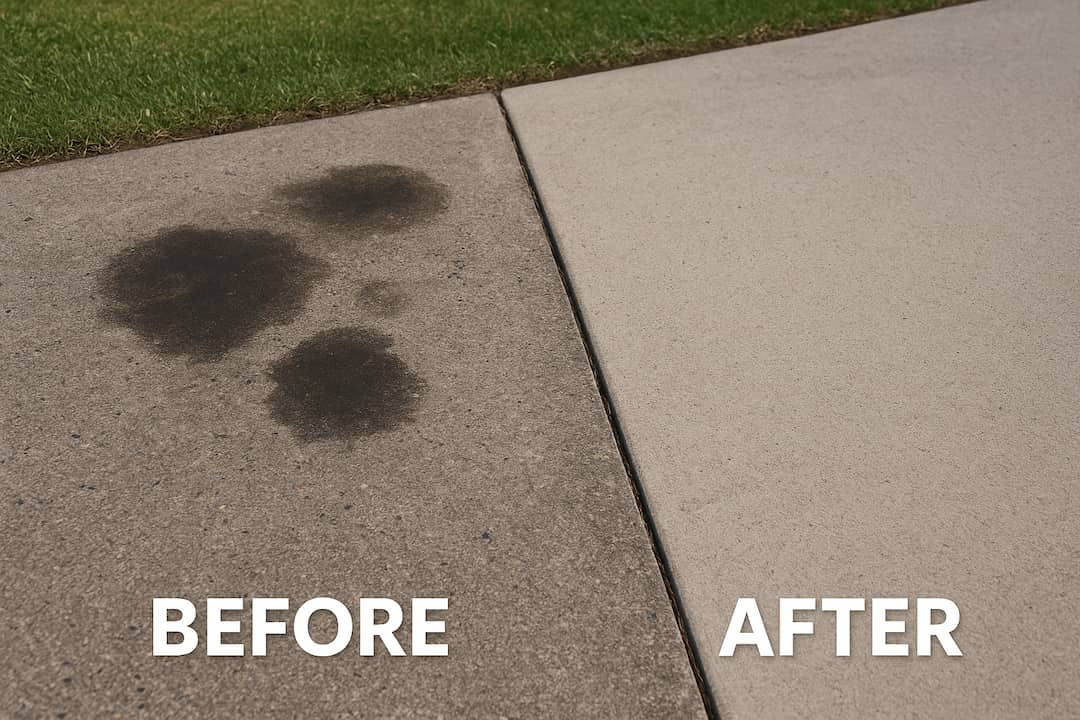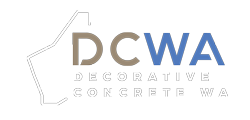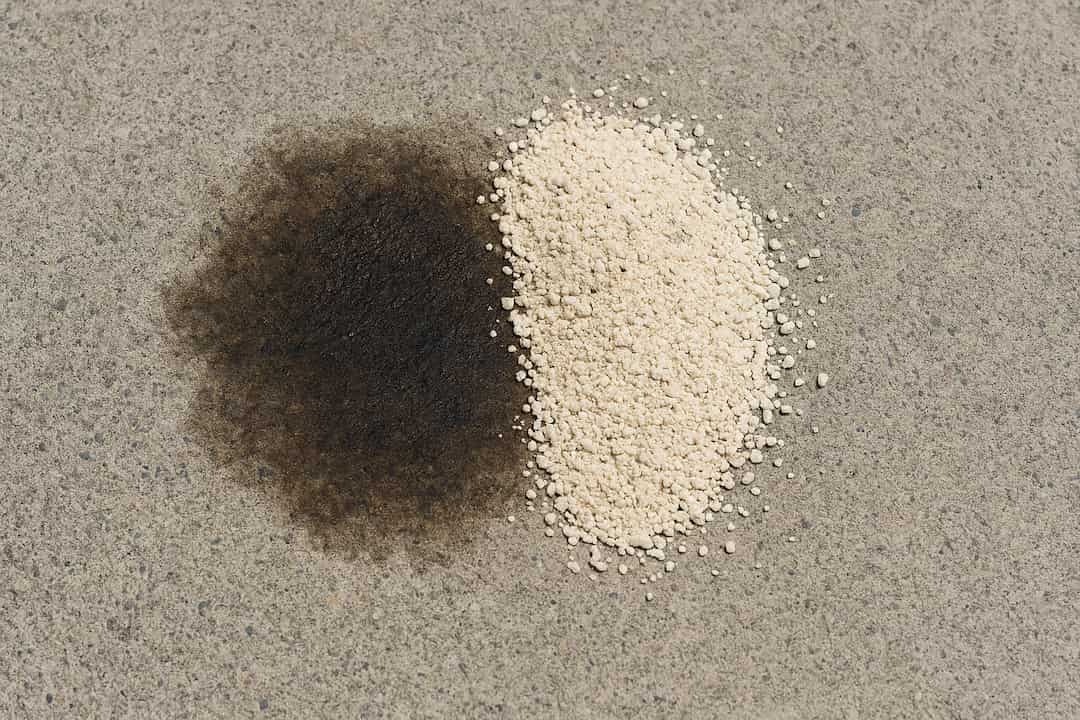Step-by-Step Guide to Removing Oil Stains from Concrete Driveways

Oil stains on concrete driveways are frustrating, but the good news is they don’t have to be permanent. With the right approach, you can clean oil off concrete and restore your driveway’s appearance without replacing the surface. Some stains can be tackled with simple DIY methods, while tougher marks may call for professional driveway stain removal.
As Perth concreters with 15+ years of experience, we know how to clean a concrete driveway so it stays durable, low-maintenance, and looking sharp. Here’s how you can deal with oil stains effectively.
Quick Summary
- Fresh stains are much easier to remove — act quickly.
- Start by soaking up excess oil with kitty litter or sawdust.
- Use a degreaser, dishwashing liquid, or baking soda for light stains.
- Pressure washing restores large areas and stubborn marks.
- Professional treatment is best for old, deep-set stains.
- Sealing your driveway helps prevent future oil marks.
Why Oil and Other Stains Are a Problem for Driveways
Concrete is naturally porous, which means it absorbs liquids like oil, grease, and fuel quickly. Once oil seeps below the surface, it creates dark, stubborn marks that can be difficult to shift.
It’s not just about appearance either. A stained driveway can:
- Make your home look untidy and poorly maintained.
- Reduce the kerb appeal and even the value of your property.
- Create slippery patches that become a safety hazard in wet conditions.
- Lead to deeper damage if chemicals continue to soak into the concrete.
Leaving oil stains untreated will only make them harder to remove. Acting early keeps your driveway looking clean and protects the investment you’ve made in your concrete driveway.
Step-by-Step Methods for Removing Oil Stains
Not all stains are the same. Fresh oil marks can often be lifted with household items, while older, set-in stains may need stronger products or professional help.
DIY Methods for Homeowners
- Blot fresh spills straight away
- Cover the oil with kitty litter, sawdust, or sand.
- Leave it to absorb for a few hours, then sweep it away.
- Scrub with detergent or degreaser
- Mix dishwashing liquid or a concrete degreaser with warm water.
- Use a stiff bristle brush to scrub the stain in circular motions.
- Rinse with a hose and repeat if needed. Industry guidelines, such as those outlined by the Concrete Masonry Association of Australia, recommend always following cleaner instructions closely to avoid damaging the surface.
- Try baking soda or vinegar for light stains
- Sprinkle baking soda directly onto the stain and scrub with a brush.
- Alternatively, pour vinegar over the area, let it sit for 15 minutes, then rinse.
- Use a pressure washer for larger areas
- A pressure washer helps strip away surface oil and restore the driveway’s appearance.
- Be careful with settings — too much pressure can damage some concrete finishes.
When to Call Professionals
- The stain is years old and has penetrated deeply.
- Large sections of the driveway are affected.
- DIY scrubbing risks damaging decorative or sealed finishes.
Professional concreters use specialised cleaning products and equipment designed for long-lasting results without harming your driveway.
Best Products and Tools for Stain Removal
Having the right products and tools on hand makes driveway stain removal much easier and more effective. Here are some proven options:
- Absorbents – Kitty litter, sawdust, or sand are excellent for soaking up fresh oil before it sets.
- Concrete degreasers – Specially formulated cleaners break down oil and grease more effectively than general household soaps.
- Dishwashing liquid – A handy option for lighter stains, especially when paired with hot water.
- Baking soda – Works well on surface-level stains and is safe to use around pets and plants.
- Stiff bristle brush – Essential for scrubbing cleaners into the concrete surface.
- Pressure washer – Ideal for large areas or stubborn stains that need a deeper clean.
- Safety gear – Gloves and goggles protect you from splashes when using stronger products.
For Perth homeowners, investing in a quality degreaser and a stiff bristle brush usually covers most stain removal jobs. A pressure washer is a bonus if you want to keep your concrete driveway looking sharp year-round.
Preventing Future Stains
The best way to deal with oil stains is to stop them from happening in the first place. With a few preventative measures, you can keep your driveway looking fresh and reduce the risk of long-term damage.
- Seal your driveway – Applying a high-quality concrete sealer creates a protective barrier that stops oil from soaking in. This makes cleaning much easier.
- Clean regularly – A quick wash every few weeks prevents small drips and dirt from building up into stubborn stains.
- Use drip trays or parking mats – Place them under vehicles that are prone to leaks to catch oil before it hits the concrete.
- Schedule professional maintenance – A concreter can reseal and refresh the surface, extending the life of your concrete driveway and keeping it looking its best.
By taking these simple steps, you’ll spend less time scrubbing stains and more time enjoying a driveway that enhances your home’s kerb appeal.
Conclusion
Oil stains don’t have to ruin the look of your driveway. With the right approach, you can remove fresh spills quickly, treat older stains effectively, and keep your concrete looking clean and well cared for.
DIY methods like absorbents, baking soda, and pressure washing work well for small jobs, while professional cleaning ensures deep-set stains are handled without damaging the surface. Adding a sealer and simple maintenance habits will also save you time and hassle in the long run.
At Decorative Concrete WA, we don’t believe in cutting corners. If your driveway needs more than a quick clean, our expert team can restore and protect it so it stays durable, low-maintenance, and built to last. Learn more about our concrete driveways and contact us for an obligation-free quote today.
FAQs
1. What is the best homemade solution for oil stains on concrete?
Baking soda and dishwashing liquid are two of the most effective household options. Sprinkle baking soda on the stain, scrub with a stiff brush, and rinse. For fresher stains, dishwashing liquid mixed with warm water can help lift the oil.
2. Can pressure washing alone remove oil stains?
Pressure washing will help remove surface oil and lighten the stain, but deep marks often need a degreaser or chemical cleaner first. For older stains, pressure washing should be combined with a cleaning product.
3. How long does it take for oil stains to disappear naturally?
Without treatment, oil stains can remain visible for years. Sun and rain may fade them slightly, but they won’t fully disappear without proper cleaning.
4. Is sealing my driveway worth the investment?
Yes. A good sealer not only makes it easier to clean oil and grease but also protects against weather, dirt, and general wear. It extends the life of your
concrete driveway and reduces maintenance.
5. Can old stains still be removed after years?
Old, set-in stains can be challenging, but with professional cleaning methods and specialised products, they can often be significantly reduced or removed.

